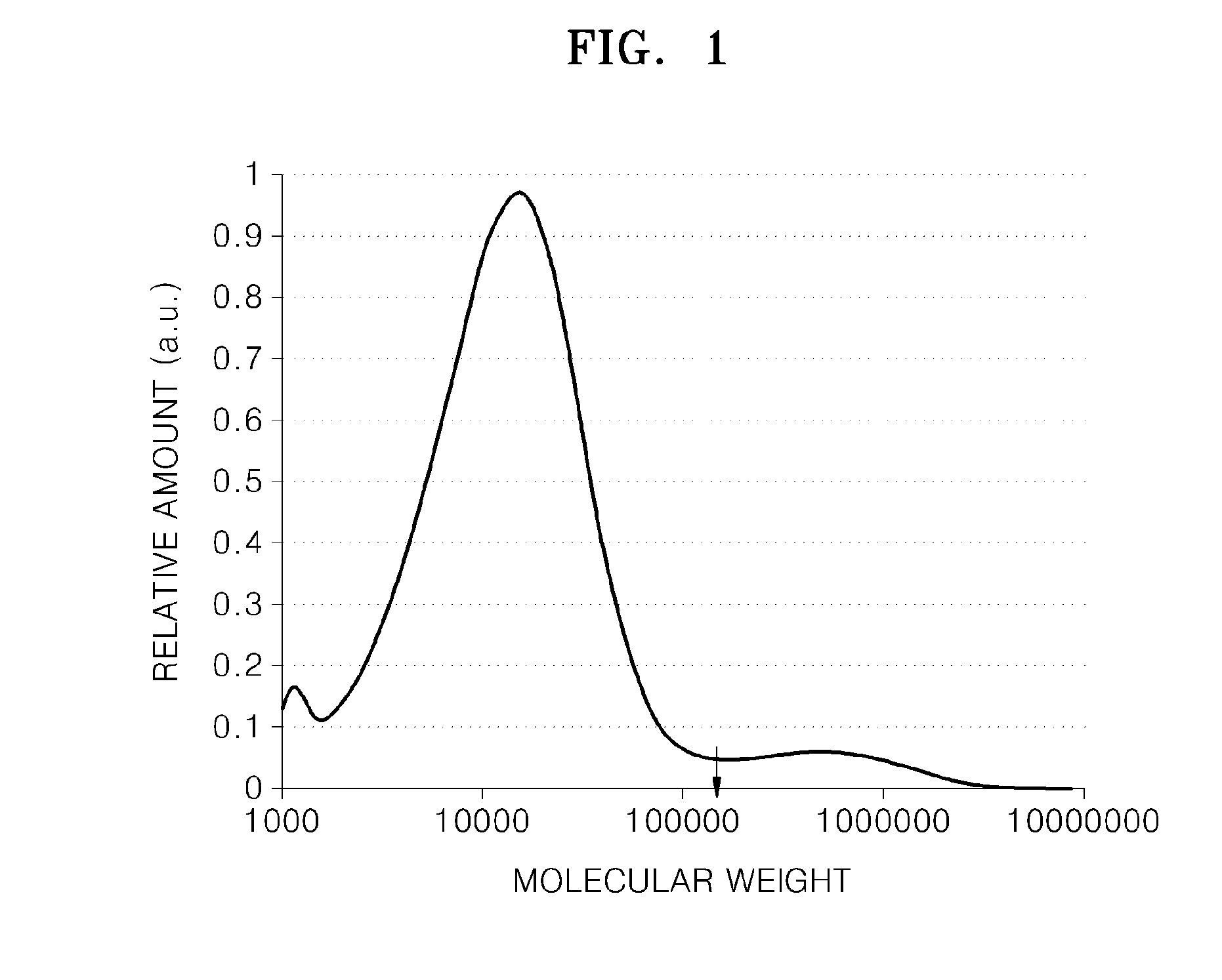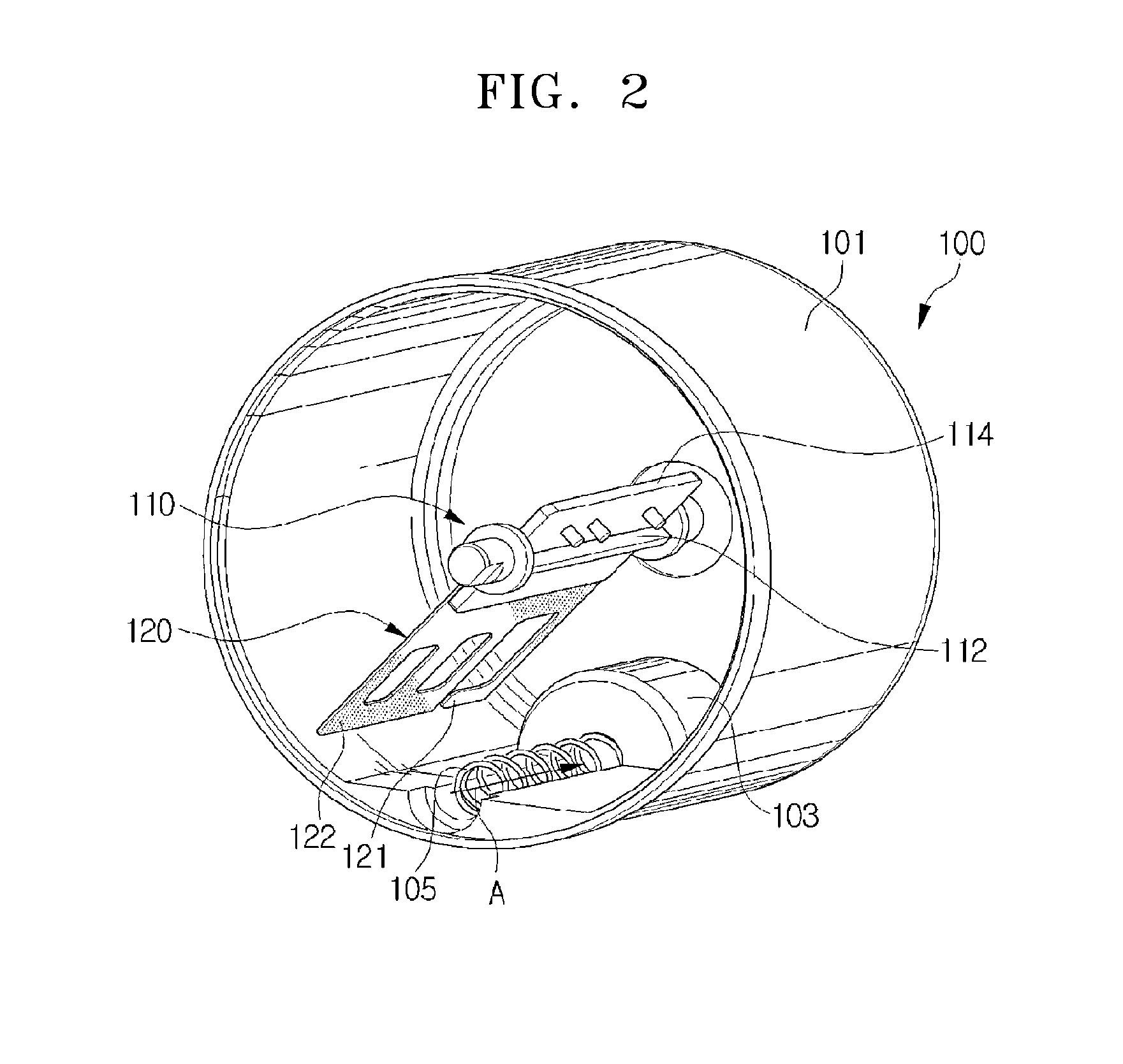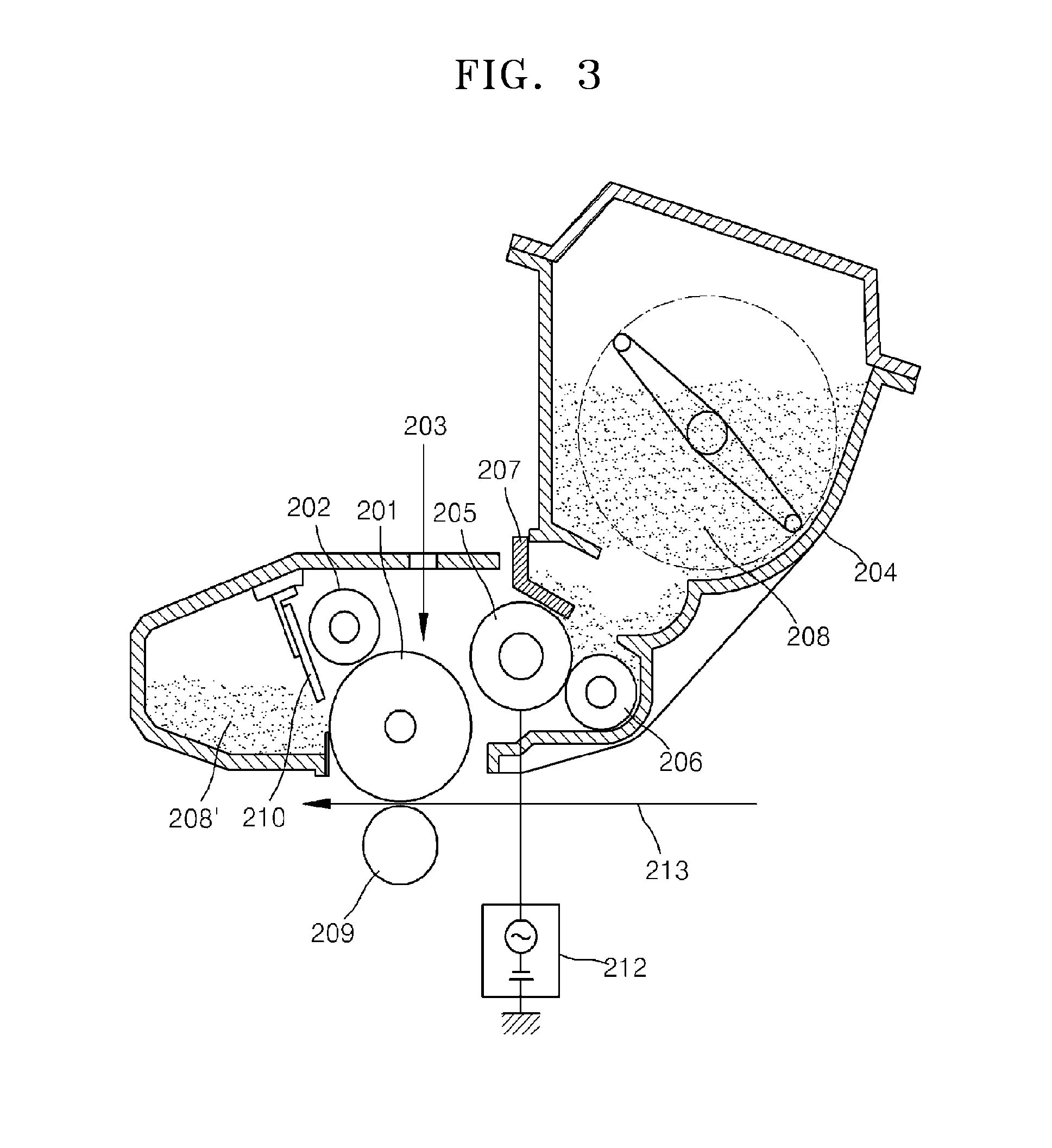Toner for developing electrostatic charge image, method of preparing the same, device for supplying the same, and apparatus and method for forming image using the same
a technology of charge image and toner, which is applied in the field of toner for developing an electrostatic charge image, can solve the problems of reducing the heat storage ability and fluidity of toner, the difficulty of independently designing each property of toner such as charging, fixation, fluidity or storage ability, etc., and achieves the effect of suppressing the exposure of the core layer
- Summary
- Abstract
- Description
- Claims
- Application Information
AI Technical Summary
Benefits of technology
Problems solved by technology
Method used
Image
Examples
manufacturing example 1
Synthesis of Low Molecular Weight Resin Latex (L-LTX)
[0158]A polymerizable monomer mixture (825 g of styrene, 175 g of n-butyl acrylate), 30 g of 2-carboxyethylacrylate (Sipomer, Rhodia), 25 g of 1-dodecanethiol acting as a chain transfer agent (CTA), and 418 g of sodium dodecyl sulfate (Aldrich) aqueous solution (2 wt % based on the weight of water) as an emulsifier were loaded into a 3 L beaker, and the mixture was stirred to prepare a polymerizable monomer-emulsified solution. Separately, 16 g of ammonium persulfate (APS) as an initiator and 696 g of sodium dodecyl sulfate (Aldrich) aqueous solution (0.4 wt % based on the weight of water) as an emulsifier were loaded into a 3 L double-jacketed reactor heated to a temperature of about 75° C. and the polymerizable monomer-emulsified solution separately prepared as described above was slowly added thereto dropwise while stirring for 2 hours or more, thereby producing a low molecular weight resin latex (L-LTX). The reaction was perfo...
manufacturing example 2
Synthesis of High Molecular Weight Resin Latex (H-LTX)
[0159]Polymerizable monomer mixture (685 g of styrene, 315 g of n-butyl acrylate), 30 g of 2-carboxyethylacrylate (Sipomer, Rhodia), and 418 g of sodium dodecyl sulfate (Aldrich) aqueous solution (2 wt % based on the weight of water) were loaded into a 3 L beaker, and the mixture was stirred to prepare a polymerizable monomer-emulsified solution. Separately, 5 g of ammonium persulfate (APS) as an initiator and 696 g of sodium dodecyl sulfate (Aldrich) aqueous solution (0.4 wt % based on the weight of water) were loaded into a 3 L double-jacketed reactor heated to a temperature of about 60° C. and the polymerizable monomer-emulsified solution separately prepared as described above was slowly added thereto dropwise while stirring for 3 hours or more, thereby producing a high molecular weight resin latex (H-LTX). The reaction was performed for 8 hours at a reaction temperature of about 75° C. An average particle size of the prepared...
manufacturing example 3
Preparation of Colorant Dispersion
[0160]10 g of sodium dodecyl sulfate (Aldrich) as an anionic reactive emulsifier was loaded into a milling bath together with 60 g of cyan pigment (PB 15:4), and 400 g of glass beads having a diameter of about 0.8 to about 1 mm were added thereto and milling was performed thereon at room temperature. Then, pigment dispersion was further performed by using an ultrasonic wavelength disperser (Sonic & Materials, VCX750) to prepare a colorant dispersion. A pigment dispersion diameter was measured by using a light scattering type particle size analyzer (Microtrac S3500) and the result was about 180 to about 200 nm. A solid content of the prepared colorant dispersion was about 18.5 wt %.
PUM
 Login to View More
Login to View More Abstract
Description
Claims
Application Information
 Login to View More
Login to View More - R&D
- Intellectual Property
- Life Sciences
- Materials
- Tech Scout
- Unparalleled Data Quality
- Higher Quality Content
- 60% Fewer Hallucinations
Browse by: Latest US Patents, China's latest patents, Technical Efficacy Thesaurus, Application Domain, Technology Topic, Popular Technical Reports.
© 2025 PatSnap. All rights reserved.Legal|Privacy policy|Modern Slavery Act Transparency Statement|Sitemap|About US| Contact US: help@patsnap.com



